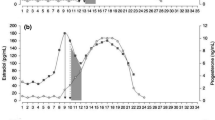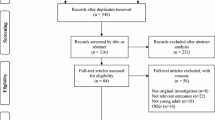Abstract
Objectives
The aim of this study was to investigate if there is a relation among 25(OH)D, aquatic training, and multifunctional fitness on functional performance of elderly woman from the community. Design: Cross-sectional study.
Setting
Community.
Participants
We evaluated elderly women aged ≥ 60 years (67±5 years old). One-hundred eighty were engaged in aquatic training (AT), 119 in multifunctional fitness (MF) for at least one year, and sedentary group (SED) with 162 independent elderly women from the community centers who had not practicing any regular physical exercise at least one year before.
Measurements
Timed up-and-go (TUG), 2-minute step test (2MST), 30-second chair stand (CS), arm curl (AC), functional reach test (FRT), unipedal balance test (UB) with visual control, handgrip right (HR) and handgrip left (HL) portable dynamometer for strength hip flexors (Hip strength) and knee extensors (Knee strength), serum 25(OH)D, intact parathyroid hormone (PTH), and creatinine clearance.
Results
Physical and functional tests showed differences among the three groups (ST; TUG, CS, AC, FR and USB = p <0.001). The PTH and the TUG test correlated inversely with 25(OH)D (r = -0.29 - p <0.001/ r = - 0.16 - p <0.001), also between 25(OH)D and BMI for AT and MF groups respectively (r= -0,15; p=0,04/ r= - 0,19; p=0,036). The AC test showed positive correlation (r = 0, 1 - p <0.001). The age and 25(OH)D were controlled and assumed to be a covariates in the statistical analysis that employed ANCOVA. There was difference on the performance of TUG test (p= 0.049).
Conclusion
TUG performance was associated with age, exercise type and serum levels of 25(OH)D. The 25(OH)D insufficiency was common in elderly women from subtropical areas.





Similar content being viewed by others
References
Saraiva GL, Cendoroglo MS, Ramos LR et al. Prevalence of vitamin D deficiency, insufficiency and secondary hyperparathyroidism in the elderly inpatients and living in the community of the city of Sao Paulo, Brazil. Arq Bras Endocrinol Metabol 2007;51: 437–42.
Falsarella GR, Coimbra IB, Barcelos CC et al. Influence of muscle mass and bone mass on the mobility of elderly women: an observational study. BMC Geriatr. 2014;31: 14–13. doi: 10.1186/1471-2318-14-13.
Gonzalez-Freire M, Cabo R, Studenski SA et at. The neuromuscular junction: aging at the crossroad between nerves and muscle. Front Aging Neurosci 2014;11: 6–208. doi: 10. 3389/fnagi. 2014. 00208.
Pedrosa MA, Castro ML. Role of vitamin D in the neuro-muscular function. Arq Bras Endocrinol Metabol 2005;49: 495–502.
Bruyère O, Cavalier E, Souberbielle J et al. Effects of vitamin D in the elderly population: current status and perspectives. Arch Public Health 2014;72: 32. doi: 10. 1186/2049-3258-72-32.
Carvalho MJ, Marques E, Mota J. Training and detraining effects on functional fitness after a multicomponent training in older women. Gerontology 2009;55: 41–8. doi: 10. 1159/000140681.
Avelar NC, Bastone AC, Alcantara MA et al. Effectiveness of aquatic and nonaquatic lower limb muscle endurance training in the static and dynamic balance of elderly people. Rev Bras Fisioter 2010;14: 229–36.
Tolomio S, Ermolao A, Lalli A et al. The effect of a multicomponent dual-modality exercise program targeting osteoporosis on bone health status and physical function capacity of postmenopausal women. J Women Aging 2010;22: 241–54. doi: 10. 1080/ 08952841. 2010. 518866.
Adams MA, Ding D, Sallis JF et al. Patterns of neighborhood environment attributes related to physical activity across 11 countries: a latent class analysis. Int J Behav Nutr Phys Act. 2013;14: 10–34. doi: 10. 1186/1479-5868-10-34.
The IPAQ group. Guidelines for data processing and analysis of the International Physical Activity Questionnaire (IPAQ)–Short and Long Forms. IOP Publishing PhysicsWeb. http://www. ipaq. ki. se/scoring. pdf Accessed 06 December 2014.
Hirani V, Cumming RG, Naganathan V et al. Associations between serum 25-hydroxyvitamin D concentrations and multiple health conditions, physical performance measures, disability, and all-cause mortality: the Concord Health and Ageing in Men Project. J Am Geriatr Soc 2014;62: 417–25. doi: 10.1111/jgs. 12693.
Podsiadlo D, Richardson S. The timed «Up & Go»: a test of basic functional mobility for frail elderly persons. J Am Geriatr Soc 1991;39: 142–8.
Duncan PW, Weiner DK, Chandler J et al. Functional reach: a new clinical measure of balance. J Gerontol 1990;45: 192–7.
Tesio L, Rota V, Longo S et al. Measuring standing balance in adults: reliability and minimal real difference of 14 instrumental measures. Int J Rehabil Res 2013;36: 362–74. doi: 10. 1097/MRR. 0000000000000037.
Rikli RE. Reliability, validity, and methodological issues in assessing physical activity in older adults. Res Q Exerc Sport 2000;71: S89–96.
Jones CJ, Rikli RE, Beam WC. A 30-s chair-stand test as a measure of lower body strength in community-residing older adults. Res Q Exerc Sport 1999;70: 113–9.
Rikli RE, Jones CJ. Development and validation of a functional fitness test for community-residing older adults. J Aging Phys 7: 32.
Marin RV, Pedrosa MA, Moreira LD et al. Association between lean mass and handgrip strength with bone mineral density in physically active postmenopausal women. J Clin Densitom 2010;13: 96–101. doi: 10. 1016/j.jocd. 2009. 12. 001.
Moreira L, Fronza FC, Santos RN et al. High-intensity aquatic exercises (HydrOS) improve physical function and reduce falls among postmenopausal women. Menopause 2013;20: 1012–9. doi: 10.1097/GME. 0b013e3182850138.
Neter J. Applied linear statistical models. Boston, Irwin, 1996.
Siegel S. Nonparametric statistics for the behavioral sciences. McGraw-Hill, Humanities, Social Sciences, Languages, 1988.
Annweiler C, Fantino B, Schott AM et al. Vitamin D insufficiency and mild cognitive impairment: cross-sectional association. Eur J Neurol 2012;19: 1023–9. doi: 10. 1111/j. 1468-1331. 2012. 03675. x.
Lips P, Duong T, Oleksik A et al. A global study of vitamin D status and parathyroid function in postmenopausal women with osteoporosis: baseline data from the multiple outcomes of raloxifene evaluation clinical trial. J Clin Endocrinol Metab 2001;86: 1212–21.
Holick MF, Binkley NC, Bischoff-Ferrari HA et al. Guidelines for preventing and treating vitamin D deficiency and insufficiency revisited. J Clin Endocrinol Metab 2012;97: 1153–8. doi: 10.1210/jc.2011-2601.
Bischoff-Ferrari HA. Relevance of vitamin D in muscle health. Rev Endocr Metab Disord 2012;13: 71–7. doi: 10. 1007/s11154-011-9200-6.
Bischoff-Ferrari HA, Willett WC, Orav EJ et al. A pooled analysis of vitamin D dose requirements for fracture prevention. N Engl J Med 2012;367: 40–9. doi: 10. 1056/ NEJMoa1109617.
Saraiva GL, Cendoroglo MS, Ramos LR et al. Influence of ultraviolet radiation on the production of 25 hydroxyvitamin D in the elderly population in the city of Sao Paulo (23 degrees 34’S). Brazil. Osteoporos Int 2005;16: 1649–54.
Daly RM. Independent and combined effects of exercise and vitamin D on muscle morphology, function and falls in the elderly. Nutrients 2010;9:1005–17. doi: 10. 3390/nu2091005.
Zamboni M, Zoico E, Tosoni P et al. Relation Between Vitamin D, Physical Performance, and Disability in Elderly Persons. Journal of Gerontology: medical sciences 2002;57A: 1, M7–M11.
Oosterwerff MM, Meijnen R, Schoor NMV et al. Effect of vitamin D supplementation on physical performance and activity in non-western immigrants. Endocrine Connections 2014;3: 224–232.
Pisciottano MVC, Pinto SS, Szejnfeld VL, et al. The relationship between lean mass, muscle strength and physical ability in independent healthy elderly women from the community. J Nutr Health Aging 2014;18: 5. 554-558.
Shirazi L, Almquist M, Malm J et al. Determinants of serum levels of vitamin D: a study of life-style, menopausal status, dietary intake, serum calcium, and PTH. BMC Womens Health. 2013;15: 13–33. doi: 10. 1186/1472-6874-13-33.
Houston DK, Janet AT, Dorothy BH et al. Change in 25-hydroxyvitamin D and physical performance in older adults. J Gerontol A Biol Sci Med Sci 2011;66: 430–6. doi: 10. 1093/gerona/glq235.
Klenk J, Rapp K, Denkinger MD et al. Seasonality of vitamin D status in older people in Southern Germany: implications for assessment. Age and Ageing 2013;42: 404–408.
Dam TT, Von Muhlen D, Barrett-Connor EL. Sex-specific association of serum vitamin D levels with physical function in older adults. Osteoporos Int 2009;20: 751–60. doi: 10.1007/s00198-008-0749-1.
Pfeifer M, Begerow B, Minne HW et al. Effects of a long-term vitamin D and calcium supplementation on falls and parameters of muscle function in communitydwelling older individuals. Osteoporos Int. 2009;2:315–22. doi: 10. 1007/s00198-008-0662-7.
Laksmi PW, Setiati S, Oemardi M et al. Correlation between vitamin D concentration and basic functional mobility in elderly women. Acta Med Indones 2007;39: 112–8.
Bischoff HA, Stähelin HB, Dick W et al. Effects of vitamin D and calcium supplementation on falls: a randomized controlled trial. J Bone Miner Res 2003;18:343–51.
Author information
Authors and Affiliations
Corresponding author
Rights and permissions
About this article
Cite this article
Nascimento, N.A.P., Moreira, P.F.P., Marin, R.V. et al. Relation among 25(OH)D, aquatic exercises, and multifunctional fitness on functional performance of elderly women from the community. J Nutr Health Aging 20, 376–382 (2016). https://doi.org/10.1007/s12603-015-0569-x
Received:
Accepted:
Published:
Issue Date:
DOI: https://doi.org/10.1007/s12603-015-0569-x




